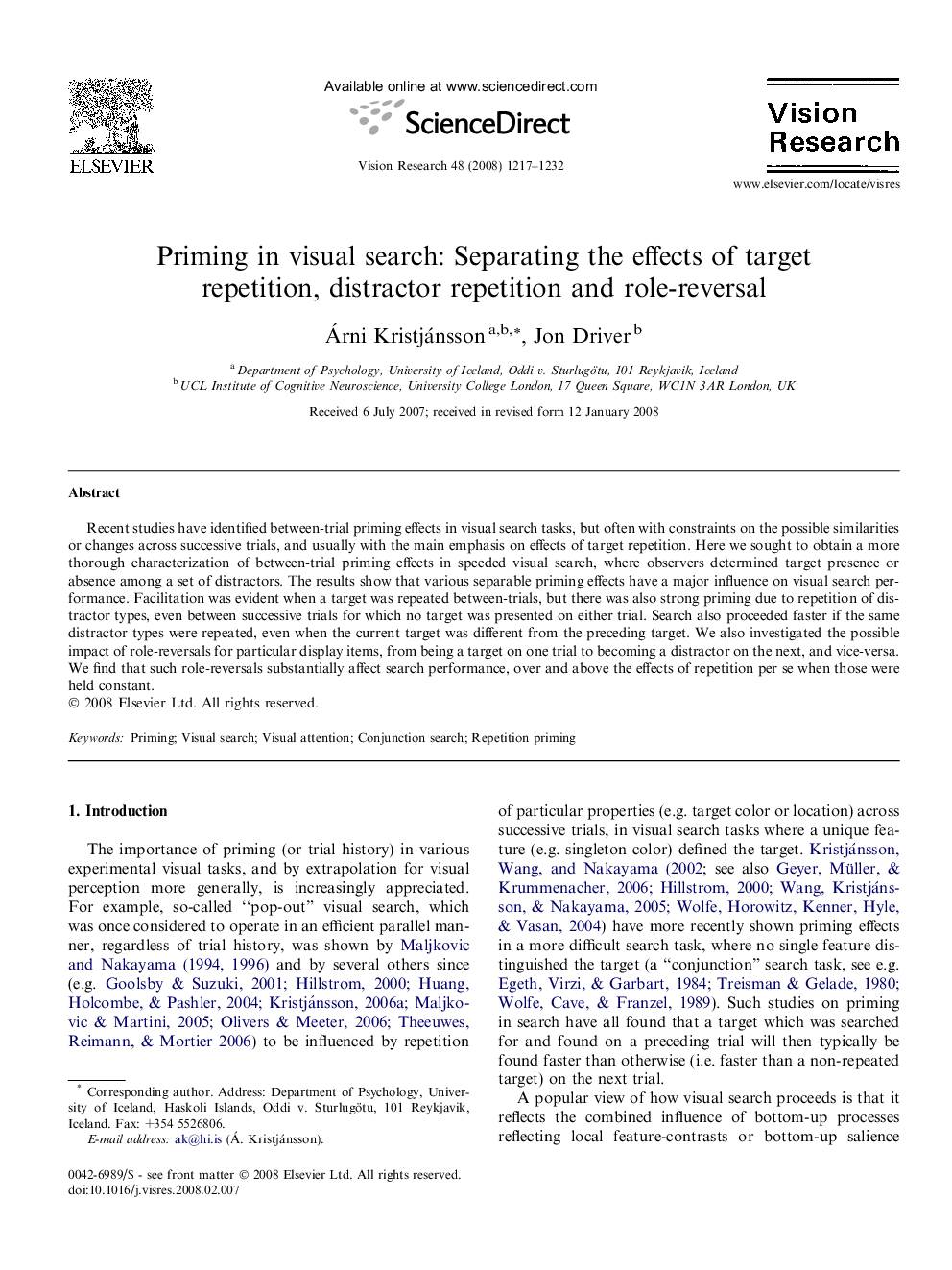| Article ID | Journal | Published Year | Pages | File Type |
|---|---|---|---|---|
| 4035239 | Vision Research | 2008 | 16 Pages |
Recent studies have identified between-trial priming effects in visual search tasks, but often with constraints on the possible similarities or changes across successive trials, and usually with the main emphasis on effects of target repetition. Here we sought to obtain a more thorough characterization of between-trial priming effects in speeded visual search, where observers determined target presence or absence among a set of distractors. The results show that various separable priming effects have a major influence on visual search performance. Facilitation was evident when a target was repeated between-trials, but there was also strong priming due to repetition of distractor types, even between successive trials for which no target was presented on either trial. Search also proceeded faster if the same distractor types were repeated, even when the current target was different from the preceding target. We also investigated the possible impact of role-reversals for particular display items, from being a target on one trial to becoming a distractor on the next, and vice-versa. We find that such role-reversals substantially affect search performance, over and above the effects of repetition per se when those were held constant.
